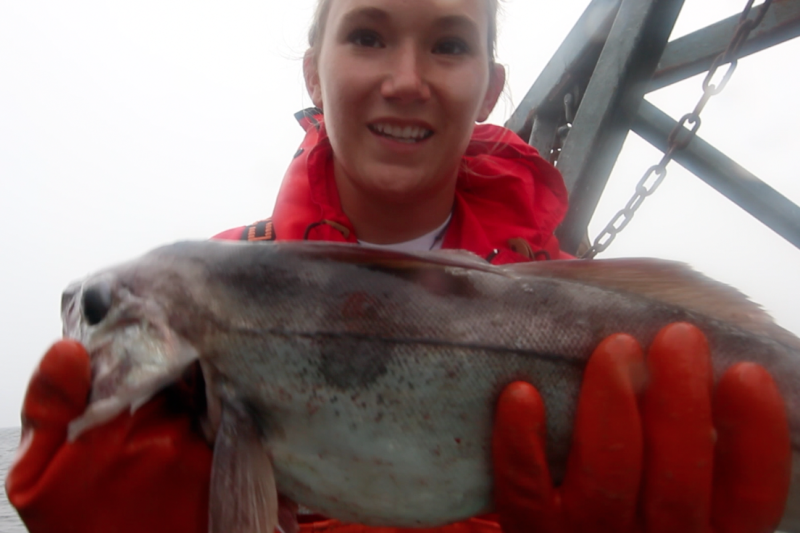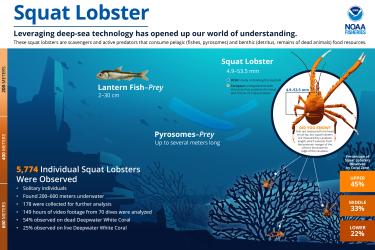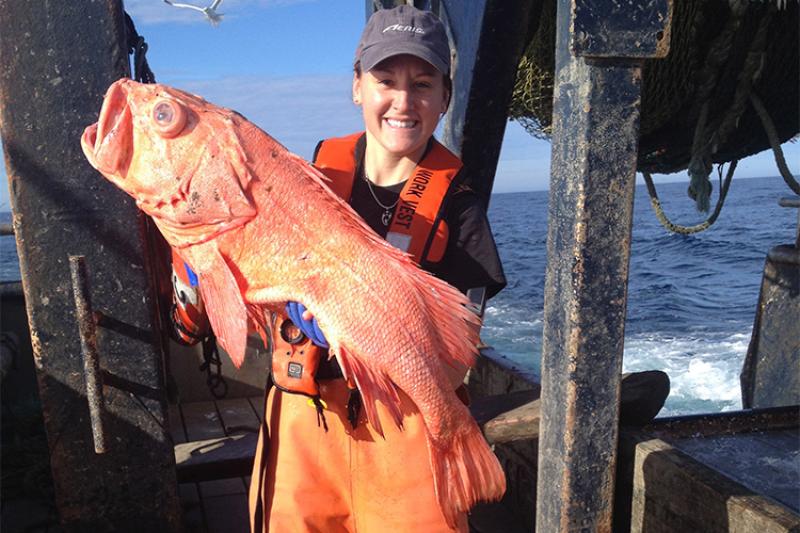Ellertson is one of about 200 observers in NOAA’s Northeast Fisheries Observer Program, and one of nearly 900 observers nationwide. The work that she and her colleagues do is critical to science, conservation, and managing the nation’s fisheries.
Ellertson’s job is to keep a record of everything that’s brought on board the fishing boat, and everything that leaves it. She tallies the targeted catch, which on her assignments typically means groundfish species like cod, flounder, pollock, or haddock. She also tallies the bycatch—that is, everything that’s released or tossed overboard because it’s the wrong kind of fish, or the right kind of fish but too small to keep, or occasionally, because it’s not a fish at all. The latter category includes seabirds, sea turtles, and marine mammals.
But Ellertson does much more than just count animals and weigh them. She records the location of the catch, the weather, and ocean conditions. That data helps scientists monitor the movement of fish in response to changing environmental conditions. She also extracts otoliths, or ear bones, from a sample of fish. Otoliths have rings that, like tree rings, can be counted to determine the fish’s age. That allows scientists to estimate the age structure of the population, an important parameter in managing fisheries.
“We’re trying to paint as complete a picture as possible so that scientists know how each fish population is doing,” Ellertson said.
Ellertson mainly works on trawlers and gillnetters, and the trips she covers last anywhere from one day to two weeks. With her blond braids and bright smile, she doesn’t look like the typical fishing boat denizen. When boat captains first meet her, they might mistake her for the inexperienced biology major she was just a few years ago. But she quickly debunks that impression with her determined approach to the job.
“Fishermen might not like that you’re on their boat, but they’re hard workers and they respect people who are hard working,” she said. “If you work hard and do your job to a T, they’ll respect you for that.”
Observers Play a Key Role in Sustainable Fisheries
The 2006 amendments to the Magnuson Stevens Fishery Conservation and Management Act—the law that guides regulation of the nation’s marine fisheries—required that managed fisheries be subject to annual catch limits, and that those limits be based on the best available science. Since 2000, more than 37 depleted but commercially valuable stocks have been rebuilt thanks to this type of science-based management, including Gulf of Maine and George’s Bank haddock, pollock, and Acadian redfish.

But science-based management requires a steady flow of data. For catch limits to work, managers need to know how quickly each species of fish gets pulled from the water. By collecting this data, observers close the feedback loop that helps ensure that annual catch limits aren’t exceeded. Also, closely monitoring the catch by species and stock area helps fishermen to direct their effort onto stocks that haven’t hit the catch limit and in that way avoid a premature end to the season.
These days, many of the fishermen that Ellertson works with are hurting because some historically important fish stocks are not as abundant as before. But other fish stocks are making a comeback, and the need for sound science and the good data it requires has never been greater. Knowing that is what keeps Ellertson on board.
But for all the seriousness that Ellertson brings to her job, she also brings a light touch.
“One of my favorite parts of this job are the conversations I’ve had with the captains and crews,” Ellertson said. “I’ve learned more from them than any textbook can ever tell me.”
Top photo: Fishery observer Aubrey Ellertson holds up a haddock fish. Credit: Caleb McMahan.


